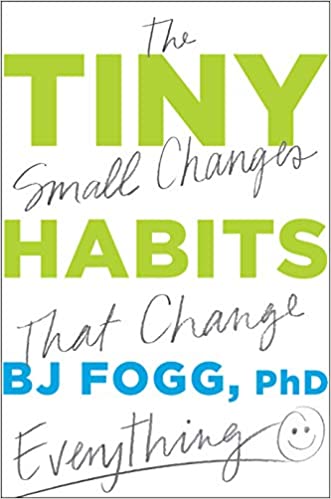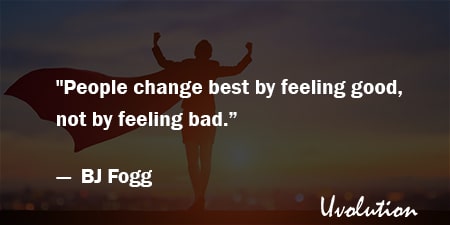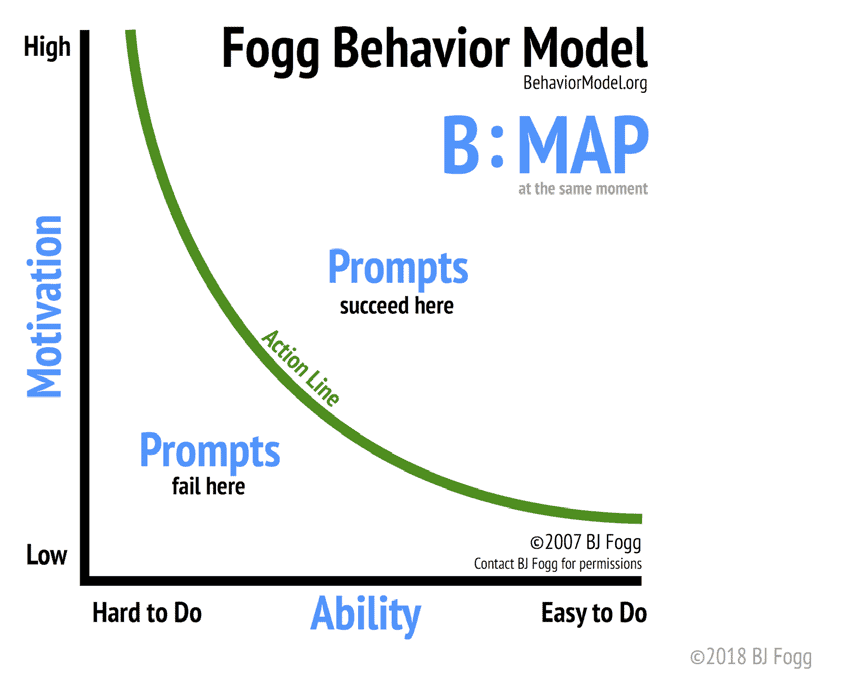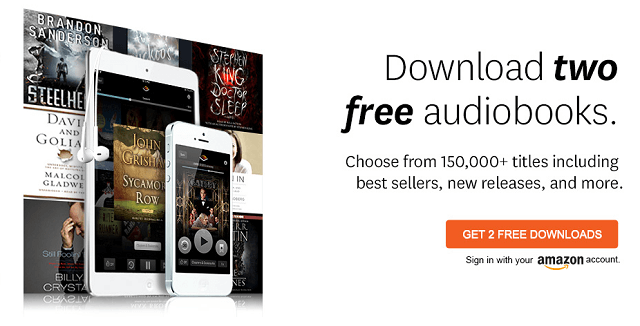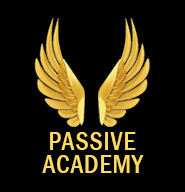Tiny Habits by BJ Fogg Book Summary
The Book in 1 Sentences
Tiny Habits: The Small Changes That Change Everything
“Tiny is mighty.
At least when it comes to change.
Over the last twenty years, I’ve found that most everyone wants to make some kind of change: eat healthier, lose weight, exercise more, reduce stress, get better sleep. We want to be better parents and partners. We want to be more productive and creative.
But the alarming levels of obesity, sleeplessness, and stress reported by the media—and seen in my Stanford lab’s research—tell me there is a painful gap between what people want and what they actually do.
The disconnect between want and do has been blamed on a lot of things—but people blame it on themselves for the most part. They internalize the cultural message of ‘It’s your fault! You should exercise more, but you aren’t doing it. Shame on you!’
I am here to say. It isn’t your fault.
And creating positive change isn’t as hard as you think.”
“The essence of Tiny Habits is this: Take a behavior you want, make it tiny, find where it fits naturally in your life, and nurture its growth. If you want to create long-term change, it’s best to start small.”
And remember that "People change best by feeling good, not by feeling bad.”~ BJ Fogg
4 BIG Ideas
Tiny Habits Book Summary
1. The Elements of Behavior.. B = MAP
“You can change your life by changing your behaviors. You know that. But what you may not know is that only three variables drive those behaviors.
The Fogg Behavior Model is the key to unlocking that mystery. It represents the three universal elements of behavior and their relationship to one another. It’s based on principles that show us how these elements work together to drive our every action—from flossing one tooth to running a marathon.
Once you understand the Behavior Model, you can analyze why a behavior happened, which means you can stop blaming your behavior on the wrong things (like character and self-discipline, for starters). And you can use my model to design for a change in behavior in
yourself and in other people.
B = MAP
Behavior happens when Motivation & Ability & Prompt converge at the same moment”
“A behavior happens when the three elements of MAP—Motivation, Ability, and Prompt—come together at the same moment. Motivation is your desire to do the behavior.
Ability is your capacity to do the behavior. And prompt is your cue to do the behavior.”
Learn more about his model here.
“It’s time to set the record straight and acknowledge that bad habits are not fundamentally different from good habits when it comes to basic components. Behavior is behavior; it’s always a result of motivation, ability, and a prompt coming together at the same moment.”
2. The ABC’s of Tiny Habits
“1. ANCHOR MOMENT
An existing routine (like brushing your teeth) or an event that happens (like a phone ringing).
The Anchor Moment reminds you to do the new Tiny Behavior.
2. NEW TINY BEHAVIOR
A simple version of the new habit you want, such as flossing one tooth or doing two push-ups.
You do the Tiny Behavior immediately after the Anchor Moment.
3. INSTANT CELEBRATION
Something you do to create positive emotions, such as saying, ‘I did a good job!’ You celebrate
immediately after doing the new Tiny Behavior.
Anchor
Behavior
Celebration.”
“Here’s a related insight that might begin to transform your life (it transformed mine): The
easier a behavior is to do, the more likely the behavior will become a habit. This applies to habits we consider ‘good’ and ‘bad.’ It doesn’t matter. Behavior is behavior. It all works the same way.”
3. Action Prompt - Anchors
“You already have a lot of reliable routines, and each of them can serve as an Action Prompt for a new habit. You put your feet on the floor in the morning. You boil water for tea or turn on the coffee maker. You flush the toilet. You drop your kid off at school. You hang your coat up when you walk through the door at the end of the day. You put your head on a pillow every night.
These actions are already embedded in your life so seamlessly and naturally that you don’t have to think about them. And because of that, they make fantastic prompts. It’s an elegant design solution because it’s so natural. You already have an entire ecosystem of routines humming along nicely—you just have to tap into it.
Action Prompts are so much more useful than Person Prompts and Context Prompts that I’ve
given them a name: Anchors. When talking about Tiny Habits, I use the term Anchor to describe something in your life that is already stable and solid. The concept is pretty simple.
If there is a habit you want, find the right Anchor within your current routine to serve as your prompt, your reminder. I selected the term ‘anchor’ because you are attaching your new habit to something solid and reliable.”
“If our attempts to create this habit don’t work, we will troubleshoot, starting with the prompt. And we won’t blame ourselves for lack of motivation or willpower. What we are doing is all about design—and redesign. If we need to tap into willpower, we are doing it wrong.
If we revise the prompt and make the behavior as simple as possible, and we still don’t succeed, we’ll back up and pick a different behavior—one that we actually want to do.”
“In Behavior Design we match ourselves with new habits we can do even when we are at our most hurried, unmotivated, and beautifully imperfect. If you can imagine doing the behavior on your hardest day of the week, it’s probably a good match.”
“You can disrupt a behavior you don’t want by removing the prompt. This isn’t always easy, but removing the prompt is your best first move to stop a behavior from happening.”
“I now see this like creating computer code. If you get the algorithm correct—this behavior then this behavior then this behavior and then bam— you have a reliable outcome.”
4. Celebrating and "Shine"
“What might surprise you is this: In English we do not have a perfect word to describe the positive feeling we get from experiencing success. I’ve read piles of scientific literature on related topics, and I’ve done my own research in this area, and I am convinced that we are lacking a good word.
(The closest label is ‘authentic pride,’ but that’s not an exact match.) So, with the encouragement of three of the world’s experts on human emotion, I decided to create a new
word for this feeling of success.
Ready? I call this feeling Shine.
You know this feeling already: You feel Shine when you ace an exam. You feel Shine when you
give a great presentation and people clap at the end. You feel Shine when you smell something
delicious that you cooked for the first time.
I believe my celebration technique is a breakthrough in habit formation. I hope you can see why.
By skillfully celebrating, you create a feeling of Shine, which in turn causes your brain to encode the new habit.
If I could teach you Tiny Habits in person, I would start our training by focusing on celebrations.
I would help you find celebrations that are natural and effective for you. We would practice them together and it would be a blast. I would train you in celebrations before teaching you about the Fogg Behavior Model, or the power of simplicity, or Anchors, or recipes for Tiny Habits.
Celebrations would be first—because it’s the most important skill for creating habits.”
“Celebration will one day be ranked alongside mindfulness and gratitude as daily practices that contribute most to our overall happiness and well-being. If you learn just one thing from my entire book, I hope it’s this: Celebrate your tiny successes. This one small shift in your life can have a massive impact even when you feel there is no way up or out of your situation. Celebration can be your lifeline.”
“Once you remove any hint of judgment, your behavior becomes a science experiment. A sense of exploration and discovery is a prerequisite to success, not just an added bonus.”
“You can now filter out all that noise and confusion about habits and human behavior. Because you know how behavior works, you what to pay attention to and embrace, and what to ignore
and discard. If an e-mail from a friend comes through about a new exercise or diet program, a quick scan will tell you all you need to know.
Will it help you do what you already want to do? Will it help you feel successful? The answers to those questions are freeing because if the change program doesn’t satisfy these two requirements, it’s not worth your time.”
That was my QUICK summary of the great book Tiny Habits by BJ Fogg. If you’re interested, get your copy. There is a HUGE amount of life-changing ideas in this book, and we’ve only touched on a tiny bit of it.
Buy The Book: Tiny Habits by BJ Fogg

GET Blinkist 7 Days FREE Trial
3000+ Book Summaries
(Audio and Text)

